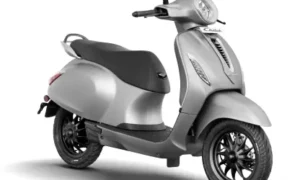Bollards are often overlooked, yet they play a crucial role in ensuring the safety of pedestrians and motorists alike. These simple, sturdy barriers are used in a variety of settings, from city streets to parking lots, to protect people and property from the potential dangers posed by vehicles. In this article, we will explore the world of bollards, their importance in public safety, the different types available, and the safety standards and regulations that govern their use.
What are Bollards?
Bollards are short, vertical posts typically made of steel, concrete, or other durable materials, designed to control traffic and protect pedestrians and property from vehicle collisions. They are often used to create barriers or delineate spaces, such as separating pedestrian walkways from vehicle lanes or preventing vehicles from entering restricted areas. Bollards can be permanent or removable, and some even have the ability to retract into the ground when not in use.
The Importance of Bollards for Public Safety

Bollards
Bollards serve several vital functions in ensuring public safety, including:
- Traffic control: Bollards help guide vehicles and prevent them from entering pedestrian areas or restricted zones. They can also be used to create designated parking spaces, manage traffic flow, and enforce speed limits.
- Pedestrian safety: By separating pedestrians from vehicles, bollards provide a physical barrier that can prevent accidents and save lives. They also help to create a sense of security for people walking in busy areas, such as city streets or shopping centers.
- Property protection: Bollards can be used to protect buildings, monuments, and other structures from vehicle collisions, which can cause significant damage and even result in fatalities.
- Security: In high-security areas, bollards can be used to prevent unauthorized vehicles from entering and to protect against potential terrorist attacks or other threats.
Types of Bollards and Their Applications
There are several different types of bollards, each with its specific applications:
- Fixed bollards: These are permanently installed and provide a strong, immovable barrier. They are often used to protect buildings or other structures from vehicle collisions and to delineate pedestrian areas.
- Removable bollards: These can be easily removed and reinstalled, allowing for temporary access to restricted areas or for use in special events. They are often used in parking lots or to control traffic during construction projects.
- Retractable bollards: These can be raised or lowered into the ground, providing a flexible barrier that can be adjusted as needed. They are often used in areas where access needs to be controlled, such as at the entrance to a secure facility or in pedestrian zones during certain hours.
- Flexible bollards: Made from materials that bend upon impact, these bollards can withstand minor collisions without causing damage to vehicles or the bollard itself. They are often used in parking lots or other areas where low-speed collisions are more likely.
- Decorative bollards: These bollards are designed with aesthetics in mind and can be made from a variety of materials, including cast iron, stainless steel, and even wood. They are often used in historic districts or other areas where appearance is a priority.
Safety Standards and Regulations for Bollards
There are several safety standards and regulations that govern the use of bollards, including:
- The American Association of State Highway and Transportation Officials (AASHTO) provides guidelines for the design and installation of bollards in public spaces.
- The International Building Code (IBC) includes requirements for the use of bollards to protect buildings and other structures from vehicle collisions.
- The Americans with Disabilities Act (ADA) requires that bollards be detectable by individuals with visual impairments and not pose a hazard to those using mobility devices.
- The National Fire Protection Association (NFPA) sets standards for the use of bollards to protect fire hydrants and other emergency access points.
Bollard Installation and Maintenance

Proper installation and maintenance of bollards are essential for ensuring their effectiveness and longevity. Some key considerations include:
- Location: Bollards should be installed in strategic locations to provide maximum protection and visibility. This may include areas with high pedestrian traffic, near building entrances, or around vulnerable structures.
- Spacing: Bollards should be spaced appropriately to allow for pedestrian and vehicle access while still providing an effective barrier. Spacing requirements may vary depending on the specific application and local regulations.
- Materials: Bollards should be made from durable materials that can withstand the elements and potential impacts. This may include steel, concrete, or other sturdy materials.
- Maintenance: Regular inspections and maintenance of bollards are necessary to ensure their continued effectiveness. This may include checking for signs of wear or damage, repainting as needed, and ensuring that any moving parts are functioning correctly.
Conclusion
Bollards are an essential tool for promoting public safety and protecting property from potential vehicle collisions. By understanding the different types of bollards available and the safety standards and regulations that govern their use, we can make informed decisions about their implementation in our communities. Proper installation and maintenance of bollards are crucial for ensuring their effectiveness and longevity, ultimately making our streets and public spaces safer for everyone.

























































